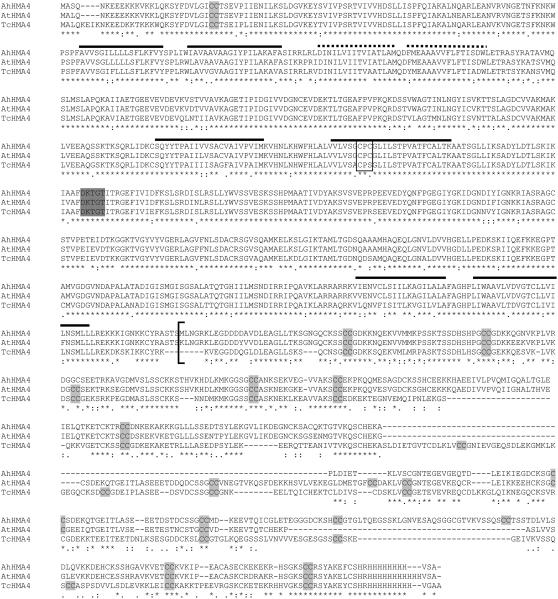Figure 4.
Sequence similarity of AhHMA4 (Auby, France) to other HMA4 amino acid sequences. Deduced amino acid sequences for AhHMA4 (accession no. DQ221101), AtHMA4 (NM127468), and TcHMA4 (AJ567384) are shown aligned using the ClustalW method (Thompson et al., 1994). A number of motifs common to P1B-type ATPases are indicated, including the highly conserved CPx motif (boxed), the ATPase phosphorylation site (shaded in dark gray), the transmembrane spans (consensus: continued lines; probable: dotted lines, according to ARAMEMNON predictions softwares). Also, Cys residues in the C terminus are highlighted. The start of the C-terminal fragment used in the yeast tolerance assay is indicated with a bracket. Asterisks (*) indicate the identical residues; “:” indicates that one of the following strong groups is fully conserved: STA, NEQK, NHQK, NDEQ, QHRK, MILV, MILF, HY, and FYW; “.” indicates that one of the following weaker groups is fully conserved: CSA, ATV, SAG, STNK, STPA, SGND, SNDEQK, NDEQHK, NEQHRK, FVLIM, and HFY.

